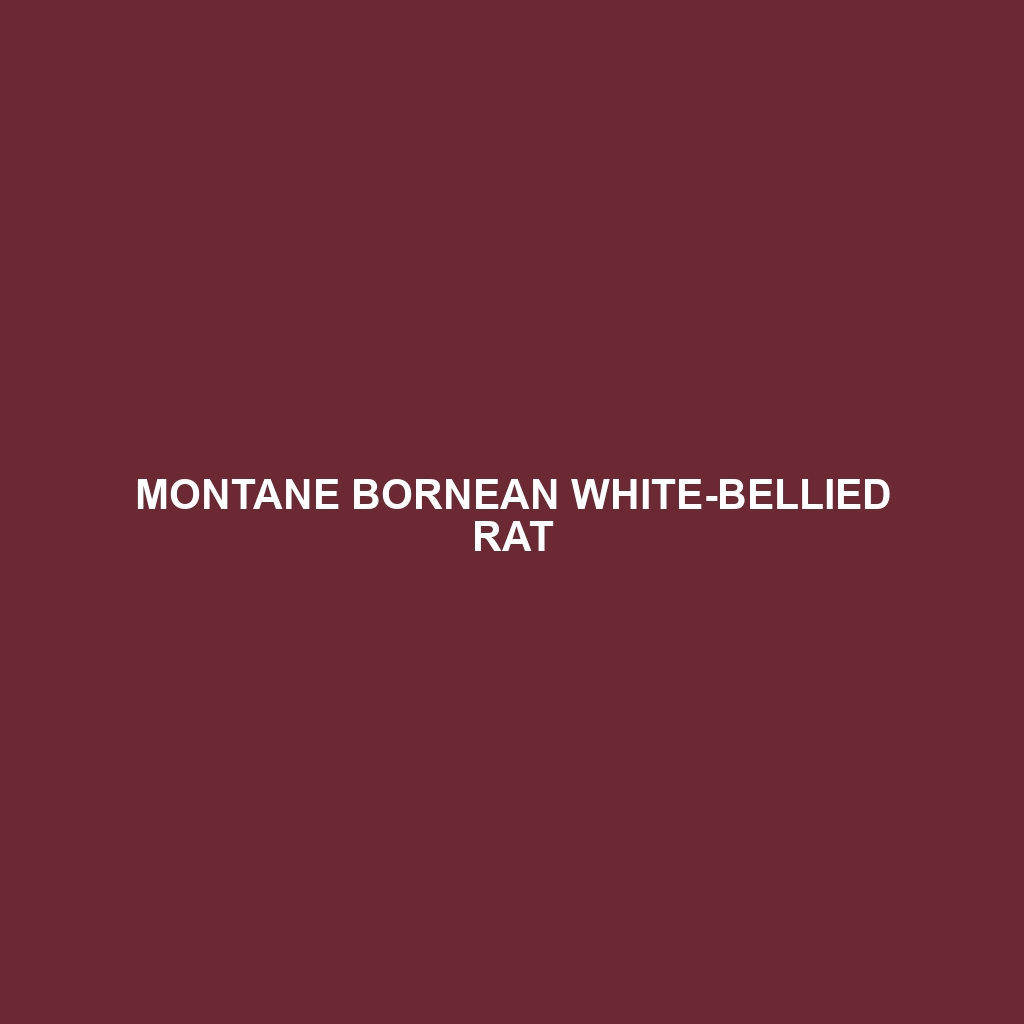Montane Bornean White-bellied Rat
Common Name: Montane Bornean White-bellied Rat
Scientific Name:
Habitat
The Montane Bornean White-bellied Rat is primarily found in the montane forests of Borneo, particularly in the mountainous regions of Malaysian Sabah and Sarawak. These adaptations enable them to thrive in high-altitude environments where dense vegetation provides ample cover and food sources. The moist, tropical climate of these forests is essential for their survival, making them a significant species within this unique ecosystem.
Physical Characteristics
This medium-sized rat typically measures between 20 to 25 centimeters in length, excluding the tail, which adds an additional 15 to 20 centimeters. The Montane Bornean White-bellied Rat is characterized by its distinctive white underbelly, contrasting with its dark brown to gray fur on the upper body. Their rounded ears, sharp whiskers, and elongated snouts contribute to their unique appearance. The fur texture is soft and dense, providing insulation in their cool montane habitat.
Behavior
The Montane Bornean White-bellied Rat is primarily nocturnal, exhibiting increased activity during the night. They are known for their agile climbing abilities, often seen navigating trees in search of food. This species displays social behaviors; individuals are often found in small groups which enhances their chances of survival against predators. Their ability to communicate through ultrasonic vocalizations is notable, playing a significant role in their social interactions.
Diet
As omnivores, Montane Bornean White-bellied Rats have a varied diet that includes fruits, seeds, insects, and small invertebrates. They utilize their excellent climbing skills to access fruits and leaves in higher branches, often feeding on the seeds of various trees native to the montane ecosystem. Their dietary habits contribute to seed dispersal, demonstrating their ecological role within their habitat.
Reproduction
The Montane Bornean White-bellied Rat has a breeding season that coincides with the wet season in Borneo, typically occurring from May to August. Females give birth to litters of 3 to 6 offspring after a gestation period of approximately 30 days. The young are altricial, born hairless and blind, depending on their mother for warmth and nutrition. Weaning occurs at around 4 weeks, with juvenile rats becoming independent by 2 months of age.
Conservation Status
As of the latest assessments, the Montane Bornean White-bellied Rat is classified as vulnerable due to habitat loss from deforestation and land conversion for agriculture. Conservation efforts are essential for their survival, as the montane forests of Borneo continue to face significant threats from human activities.
Interesting Facts
One fascinating aspect of the Montane Bornean White-bellied Rat is its ability to adapt its behavior in response to environmental changes, showcasing a remarkable level of resilience. Additionally, they have been the subject of ecological studies aimed at understanding biodiversity in Borneo’s unique montane ecosystems, contributing valuable insights into wildlife conservation.
Role in Ecosystem
Montane Bornean White-bellied Rats play a crucial role in their ecosystem as both prey and seed dispersers. Their interactions with plant life, particularly through their feeding habits, help maintain the diversity of their habitat. Furthermore, they serve as a food source for various predators, including birds of prey and small mammals, illustrating their importance in the food chain.
